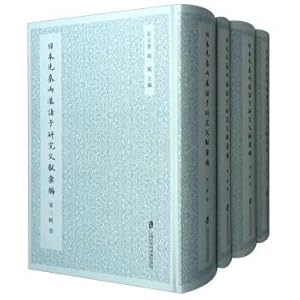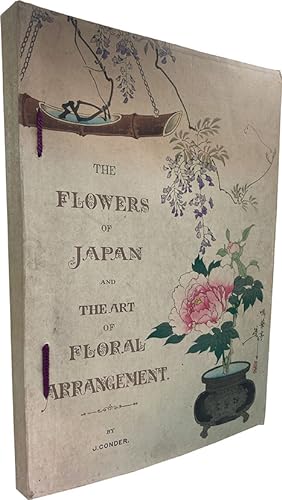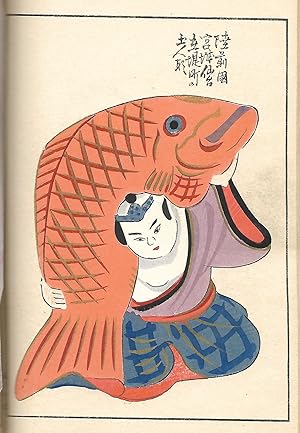Japan or Tokyo or Kyoto or Osaka or Nippon or Yokohama, Softcover (Over 42,000 results)
Product Type
- All Product Types
- Books (41,389)
- Magazines & Periodicals (640)
- Comics (190)
- Sheet Music (6)
- Art, Prints & Posters (202)
- Photographs (59)
- Maps (37)
-
Manuscripts &
Paper Collectibles (80)
Condition
Binding
- All Bindings
- Hardcover
- Softcover
Collectible Attributes
- First Edition (2,778)
- Signed (258)
- Dust Jacket (455)
- Seller-Supplied Images
- Not Printed On Demand (34,825)
Free Shipping
Seller Location
Seller Rating
-
Japan das Kernland Grossostasien. Ein Bildbuch. Herausgegeben von Matin Schwind und Johannes Paul. Mit zahlreichen fotografischen Abbildungen. Bildautoren Verzeichnis - Auswahl: Burchardt / Werner Cohnitz / Fukamoto / Fritz Henle / Okamoto Toyo / Martin Schwind / Natori.siehe Scan.
Published by Rütten Loening,, Potsdam,, 1944
Seller: Umbras Kuriositätenkabinett, Berlin, Germany
Photograph
33 x 25 cm. 95 S. ISBN: Keine. Kartoniert / Soft cover. Ungebundenes nicht beschnittenes Exemplar, nicht geheftet- einzelne Lagen lose / Probedruck??? No jacket. Guter Zustand / Good condition. Einige Lagen wasserwellig / Papier brüchig - gebräunt / Einzelne Seiten mit Randeinrissen. Immer noch ein gutes Exemplar dieser so seltenen Ausgabe. 1. Auflage. Sprache: de. * Versandfertig innerhalb von 20 Stunden! Ein Buch das nicht im KVK - Karlsruher Virtueller Katalog für Deutschland, Schweiz, Österreich zu finden ist. Ebenfalls kein Eintrag im Katalog der Parlamentsbibliothek in Tokyo. Die "Japan-Bibliografie" von Hadamitzky verweist auch nicht auf den Titel. Ein Buch das an seiner historischen Brisanz nicht zu übertreffen ist.Achtung die Scans stammen von geringfügig, verkleinerten Kopien. Gf1 (MGT). Jpg.
-
Chef-d'oeuvre inconnu - Deluxe copy on Imperial Japan paper signed by Picasso and Vollard with the extra suite on Vélin de Rives
Published by Paris: Ambroise Vollard Éditeur, 1931, 1931
Seller: °ART...on paper - 20th Century Art Books, Lugano, Switzerland
Association Member: ILAB
Book First Edition Signed
Soft cover. Condition: Very Good. Dust Jacket Condition: Very Good. 1st Edition. Gr.4° (32 x 24 cm) - B/w - 12 Original etchings in-out of text and one etching for the "table des eaux-fortes" Engraved by Pablo Picasso - A complete Suite of 12 engravings on vélin de Rives - Drawings by the artist engraved on wood by Georges Aubert and printed in-text. A "preface" of 16 pages of drawings composed of points and lines drawn by Picasso in 1924 also engraved on wood by Aubert. First edition, published in 340 copies (65 Imperial Japon + 240 on Velin de Rives & 35 H.C.) Our copy is 1 of 65 copies on Imperial Japan. Signed in brush by Picasso and monogrammed in pen by Vollard. Text in French language. Original boards. In Very good condition. Signed by Author(s).
-
A Collection of Extraordinary Material Printed by German Prisoners at the Bando POW Camp in Japan during World War I, consisting of: 1. Kriegsgefangenenlager Bando Adressbuch (a camp directory); 2. Drei Märchen (a children's book); 3. Die Baracke (six monthly newspaper issues)
Published by Lagerdruckerei, Bando Kriegsgefangenenlager, Japan, 1917
Seller: Between the Covers-Rare Books, Inc. ABAA, Gloucester City, NJ, U.S.A.
First Edition
Softcover. Condition: Near Fine. A collection of eight rare printed items little known outside of Germany or Japan. The Bando POW Camp, located near Naruto, Japan, was set up in 1917 to house about one thousand German prisoners, both soldiers and civilians, who had been captured at Tsingtao, China. The collection includes the very rare camp directory: *Kriegsgefangenenlager Bando Adressbuch* (November 1917), with two fine color maps and advertisements; a beautifully illustrated children's book: *Drei Märchen* meant to be sent home to family and friends in Germany; and the final six consecutive issues of *Die Baracke* (April - September, 1919), an illustrated monthly "Zeitung für das Kriegsgefangenenlager" [Newspaper for Prisoners of War]. All eight items are remarkably well-preserved, in very good to near fine condition. Unlike other Japanese POW camps, the German prisoners at Bando were given an unusual level of freedom, and were allowed to establish several of their own community organizations, including a bakery, a theatrical troupe and orchestra, and a large scale printing house known as the "Lagerdruckerei." At the press, which operated within the camp for just over two years, from 1917 to 1919, the German inmates pioneered a unique and highly sophisticated technique for printing in color on silk paper, and they published works with remarkably sophisticated and diverse content, including articles on Japanese culture, astronomy, politics, theatre, music, poetry, and political and military affairs, as well as an explanatory guide documenting their unique printing processes. Their various publications were illustrated with color plates, maps, diagrams, etc., of an astonishing high quality, when one considers the makeshift conditions in which they were produced. The works thus display unique technical qualities and content that could only have been created at the Bando camp. A remarkable and historically important collection of materials, rarely if ever found together. Detailed descriptions of all eight items follows. I. *Kriegsgefangenenlager Bando. Japan. Adressbuch. November 1917*. [POW Camp Bando. Japan. Address Book. November 1917]. Edited by Rudolf Hülsenitz. Bando, Japan: Lagerdruckerei [Prison Camp Press]. Large octavo (7" x 10"). 79pp. Complete as printed with irregular pagination. Folding map tipped onto the inner front cover, 1 full-page map, 3 full-page color advertisements and 1 inserted color plate advertisement. In the original grey paper wrapper with printed paper title label on the front wrap. A few scattered small marginal tears to wrappers, near fine. Edited by internee Rudolf Hülsenitz, this camp directory features a list of the prisoners in alphabetical order and their addresses in the camp. Also included is a guide to the camp's shops, and information about the camp's health services. Among the graphic highlights of the book are the two beautifully designed original maps. The folding map on the inner front cover depicts the core of the camp as it appeared in 1917, Bando's first year of operation. It corresponds to the address list, depicting each barrack house (dormitory) and listing the names of the occupants according to their beds. Printed in blue, yellow, and black, it is accurate to scale and includes much topographical detail. The second, full-page map, printed on page 2, depicts the camp within its greater environs, including its barbed wire boundaries, the 8 barrack houses, sports grounds, post office, gardening area, fountains, police station, cemetery, chicken coops, its two ponds, music hall, tennis courts, botanical gardens, officers' quarters, the kitchen, offices, as well as various other structures. Also notable are the impressive color advertisements, including one for the Bando Lagerdruckerei itself, listing its publications to date. Other advertisements promote pharmacies, pastry shops, an exchange office, an art exhibition to be held in 1918, as well as a series of maps of other POW camps in Japan, and a printed celestial chart. Prior to the war Rudolf Hülsenitz was employed by the East Asia Lloyd shipping company in Shanghai, and joined the German Marine Corps in 1914. A very scarce survival. *OCLC* locates only one known extant copy, at the Bayerische Staatsbibliothek in Munich. II. Behr, E. *Drei Märchen [Three Stories]*. Bando, Japan: Lagerdruckerei [Bando Prison Camp Press], 1918. Second edition. Quarto. pp. [2 (half-title)] [1-3] 4-79 [80 (blank)]. Illustrated with 8 color plates by Gustav Möller; illustrated title page with color initials; 3 other color initials; head and tail pieces. Bound in grey silk cloth over boards with a color illustrated cover, with printed endpapers featuring an art nouveau design of salamanders and mushrooms. Inscribed in ink by a Bando camp inmate on the half-title page (dated November, 1918). Some fading and a few tiny tears to the spine and light staining to the edges of the boards, very good or better. An edition of three stories by Behr: 1. *Hans Wunderlich im Schützengraben* [Hans Wunderlich in a Trench]; 2. *Der Glückstaler* [The Chinese Money Plant]; and 3. *Die Sprechende Nactigall!* [The Talking Nightingale!]. As there were no children resident at the Bando Camp, *Drei Märchen* was specifically made to be sent home to children and relatives in Germany. This copy is inscribed by a Bando inmate to his niece Gisela, presumably in Germany. It is the second of two editions printed at the camp. *OCLC* locates only six copies: five in Germany and Japan, and one in the United States (San Jose State University). III. *Die Baracke. Zeitung für das Kriegsgefangenenlager. [The Barracks. Newspaper for Prisoners of War]. Bando, Japan*. Bando: Lagerdruckerei [Bando Prison Camp Press]. 1919. The final 6 consecutive monthly issues (April - September 1919). Illustrated with color and black & white plates and maps, several folded, and in-text illustrations. The various articles document the wide ranging cultural and scientific interests of the Bando camp.
-
Many illus., mostly in black but some in red, pink, gray, green, yellow, blue, etc. Ca. 1821 folding leaves of text. 1083 chapters in 50 parts in 54 vols. (parts 14 & 15 in one vol., parts 24, 34, 42, & 47 in two vols. each, plus one vol. of table of contents). 8vo (266 x 188 mm.), orig. blue wrappers, orig. manuscript labels on each upper wrapper, new stitching. [Probably Kyoto: written in 1690 & this is a mid-Edo copy]. A rare and extremely important text, finely illustrated and complete in 50 parts; it remained unpublished until 1936. WorldCat lists no copy of this manuscript in North America (the NYPL's copy is a microfilm). This "monumental fifty-volume work of encyclopedic nature on gagaku" (Fukushima & Nelson), was written by Suenao Abe (1622-1708), a 17th-generation specialist performer on the hichiriki (a double-reed flute). Gagaku refers to all traditional court music of Japan. The word is written in Japanese with two Chinese characters that signify "elegant music." Its origins are Chinese, but the Japanese borrowed only the Chinese court entertainment music and not the ritual music. "The Gakkaroku by Abe Suenao was compiled in 1690. At that time, the author (born in 1622) was 68 and looked back to a long experience in the service of the Imperial court in Kyoto. The Abe family was specialized in hichiriki playing and in bugaku since many generations. Suenao was excellent in both. He made a special study of the percussion patterns, to which a large part of the Gakkaroku is devoted, dealing separately with every instrument. Bugaku also is most thoroughly described. The Gakkaroku was greatly admired ever since it was completed, and is very highly thought of by modern scholars. Together with the Kyokunsho and the Taigensho it forms the body of the Gakusho' no sandaibu, the three orthodox compendia of musical knowledge. "Abe Suenao died in 1708, at the age of 87, 160 years before the great refurbishing of Imperial court music during the Meiji restoration. His well documented work was one of the pillars to support the newly restored gagaku."-Eta Harich-Schneider, "Roei: The Medieval Court Songs of Japan" in Monumenta Nipponica, Vol. 14, No. 1/2 (April-July 1958), p. 106. This encyclopedia of Japanese musicology immediately became a standard work, and copies were quickly made and circulated. As noted above, it remained in manuscript for nearly 250 years and was not published until 1936. This encyclopedia is incredibly rich in detail, revealing Abe's great scholarship. For example, the corpus of musical works past and present is given with lyrics and notation, and the sections on theory and notation are extensive. The descriptions of all the musical instruments include information on their origins and structures, and instructions for how to manufacture, practice and play them. Shishinden's theater and stage settings are described in very considerable detail and illustrated. Names of performers and dancers are given with their family trees. Abe also lists the most famous and popular pieces of many periods; important ritual performances listed by month; the sequence within performances; the greatest performers of the past; styles of dances; and extensive lists of musical pieces for dances. Descriptions of costumes, masks, and headgear are provided along with illustrations. Many performances of the past and their settings are fully elaborated. This work is wonderfully bibliographical as well: Abe provides in the final text volume a list of earlier reference books and manuscripts. The illustrations also include images of the musical instruments. Some worming, occasionally touching text (but not badly), but a fine set. Preserved in five chitsu. â § Kazuo Fukushima & Steven G. Nelson, "The Documentary Sources of Japanese Music" in Fontes Artis Musicae, Vol. 43, No. 2 (April-June 1996), p. 182.
-
Expertly backed with later thick paper, gold speckles on back of scroll, decorative wrappers with gold-pigmented manuscript label: "Uraga joriku no ezu" ["Landing at Uraga Illustrated"]. Fine paintings executed with brush & ink, many colors of wash, and metal pigment, with manuscript captions. Japan: after "Kaei 6" [1853]. A remarkable example of a "Black Ship Scroll,"a rare contemporary illustrated Japanese account of Commodore Matthew C. Perry's incursions into Japanese territory in July 1853 and February 1854. Ours is a composite scroll of drawings of varying dimensions by at least three artists; most of the images concern Perry's first expedition, but two relate to the second. The anonymous artists responsible for the paintings in this scroll were exceptionally skilled; their renderings effectively convey the surprise Japanese observers must have felt at the sight of the American squadron's steamships, as well as the unfamiliar customs and behavior witnessed when meeting the Americans face to face. Our scroll commences with a superb painting of what is probably Perry's flagship in July 1853, the USS Susquehanna, a sidewheel steam frigate. The central smokestack emits ominous black smoke, and the gunports are menacingly open. We have seen a number of Japanese depictions of American warships from the period, and this is among the finest. The text to the right of the image provides approximate measurements, details of the ship and its engine, and the number of crew members ("more than 500"). There are also some observations on the other ships in the American squadron. The next two scenes relate to the official meeting between the two sides that took place on the beach at Kurihama, near the capital, Edo. Japanese security forces had hastily constructed a reception hall where representatives could meet for negotiations. An American procession, led by a military band, is shown marching to Kurihama. The Japanese caption states that there were 500 sailors. In the middle of the column are two young boys carrying bright red boxes, which contained official letters from President Fillmore to be presented to the Japanese Emperor. A tall man with gold epaulettes behind them is certainly Commodore Perry. A Japanese note labels him as "Grand Commander." The adjacent illustration shows how security forces from three local fiefdoms prepared for the tense meeting by encircling the reception hall with troops. Japanese ships outnumber the rowboats on which the American delegation arrived. Subsequent paintings are of armed American sailors in their formal uniforms. From right to left they are captioned: "Captain," "Captain," "Foot Soldiers." Once again, the artist has meticulously recreated their uniforms and weapons. The sailors' faces, often neglected in "Black Ship Scrolls," are treated with great detail. The text to the left states that the "North Americans" stayed in Uraga for fourteen days. We are then presented with a most impressive panorama of Kurihama's reception hall and all four American warships at anchor just moments before the delegations convened. The American procession is about to enter the hall. Several geographical landmarks and persons of note are marked. This is the first time we have seen a rendering of the meeting from this vantage point; it is extremely useful for understanding the way in which the Japanese security forces cautiously prepared to host the Americans for talks. The calligraphic text in the top left recounts the day's proceedings and adds that the painting in our scroll is based on an original drawing by an eyewitness. The following section has six amusing portraits of American officers, including Perry. These come from a different illustrator; the sheet of paper bearing these portraits has been pasted on to the scroll. Part of the sheet has been carefully repaired, obscuring a couple of characters. From right to left are: "Grand Commander, Peruri [Perry]"; "Vice [Commander], Atamusu [Adams]"; "Uriyansu [Williams], Translator for Japanese"; "Hottomen [Portman], Translator for Dutch"; "Son of Perry"; "Ship Captain Appoto [Abbot]." The caption under Abbot's portrait says that he was promoted to commodore; he had previously been captain of the USS Macedonian. The final two paintings have rare depictions of Americans dancing and putting on a minstrel show for their Japanese counterparts during Perry's second, decisive expedition. These have also been pasted at the end of the scroll. On the right, two Americans are in the middle of a dance routine. The left shows nine singing sailors playing instruments to entertain their Japanese hosts. Although our illustration does not clearly show them with blackface, the Japanese text on the left describes them as having "black faces, red lips, cotton attire, and blue-and-white-striped trousers." Their performance is spotlighted by two candles and Japanese burikki - from the Dutch for "metal sheet," blik, these thin iron sheets reflected the candlelight. This is an extremely rare illustration - we have never seen this image before - of the minstrel show that Perry and his sailors put on for their Japanese hosts aboard the Powhatan in March 1854. In near fine condition; small but inoffensive wormholes, not touching any illustrations. Unidentified red ink ownership seal at the beginning. Stored in a modern wooden box. â § For a useful survey of "Black Ship Scrolls" at the Library of Congress, see Renata V. Shaw, "Japanese Picture Scrolls of the First Americans in Japan" in The Quarterly Journal of the Library of Congress, Vol. 25, No. 2 (April 1968), pp. 134-53.
-
Graphic Scenes of the Japan Expedition
Published by G.P. Putnam & Company, New York, 1856
Seller: Donald A. Heald Rare Books (ABAA), New York, NY, U.S.A.
Folio. (20 x 14 inches). 12 ff. letterpress text. 10 lithographic prints (one tinted portrait of Perry on india paper mounted from a daguerreotype by P. Haas, nine hand-coloured views by Heine [two of these chromolithographed, seven printed in two colours on india paper mounted]), all printed by Sarony & Co., all mounted on thick card with smooth glossy backings. Text in the original yellow pictorial wrappers, expertly rebacked to style with purple cloth, the plates loose as issued with the text within a half purple morocco and period purple cloth portfolio, yellow pastedowns and flaps, cloth ties. All within a black morocco backed box. An important work recording Commodore Perry's expedition to Japan: the very rare deluxe, hand coloured issue on card. William Heine was the official artist on Commodore Matthew C. Perry's expedition to Japan in 1853-54. On returning to the United States he produced several series of prints commemorating the trip. A group of six elephant-folio prints appeared in 1855, and the following year the present volume was issued, in a smaller format, with different images and with explanatory text. Both projects employed the New York lithographic firm of Sarony, among the best lithographers in the United States at that time. "As artistic productions, the pictures speak for themselves . none superior to them have been executed in the United States, and they have no cause to shun comparison with some of the best productions of Europe" (Introduction). Copies were produced tinted (though with some plates with several colors) on regular paper and a very rare deluxe hand-coloured issue on card (like the present example). The plates are numbered and titled as follows 1. [portrait of Perry]; 2. Macao from Penha Hill; 3. Whampoa Pagoda; 4. Old China Street, Canton; 5. Kung-kwa at On-na, Lew-Chew; 6. Mia or road side chapel at Yokuhama; 7. Temple of Ben-teng in the harbor of Simoda; 8. Street and bridge at Simoda; 9. Temple of the Ha-tshu Man-ya-tshu-ro at Simoda; 10. Grave yard at Simoda Dio Zenge. Bennett describes the plates as "many times finer than those in the regular account of the Perry expedition." His remarks on the work's great rarity are confirmed by its absence from both of Cordier's Japanese bibliographies. Two distinct issues of Heine's work were published: a regular issue with hand coloured plates on thick card; and the deluxe issue, like the present, with more elaborate hand coloring and on thick cards with glossy paper backings. The deluxe issue is considerably more rare than the regular issue. Bennett, p.53; McGrath American Color Plate Books 123.
-
104 pp.First edition of the account of the charting voyage by Maerten Gerritsz. Vries (1589-1646) to the north of Japan, together with the popular account of a Dutch West India Company voyage to Chile under Hendrik Brouwer (1581-1643). Brouwer, one of the directors of the Dutch West India Company, acted as the commander of a fleet of six ships, specially sent to the western coast of South America to activate the trade between the Dutch and the natives. During this voyage, which resulted in the first place in a better knowledge of that coast, Brouwer died at Chiloe and was buried at Valdivia in August 1643. Appended to that journal is the very important account of a charting voyage to Japan. That same year (1643) Maerten Gerritsz. Vries, got "instructions from Governor Van Diemen . to examine the countries to the north of Japan and to assess their economic and trading potential, particularly with regard to mineral wealth" (Howgego). He visited Hokkaido (Yezo) and Sakhalin, discovered the islands Iturup and Urup and gave his name to the strait between those islands. La Pérouse considered him one of the most eminent seafarers of his time. A couple of leaves slightly browned and a few occasional spots and smudges, otherwise a very good copy.l Cordier, Japonica, cols. 354-355; Howgego, to 1800, B169, V63; Landwehr & V.d. Krogt, VOC 372; Muller, America 358 ("of the highest interest"); Sabin 8427; STCN (7 copies).
-
Nihon Kaisan chôriku zu. (Map of the Seas, Mountains, and Lands of Japan)
Published by Edo, Sagamiya Tahe, 1691
Seller: Hünersdorff Rare Books ABA ILAB, London, United Kingdom
Map
Soft cover. Condition: Good. 2nd Edition. (JAPAN)Ishikawa, (Tomonobu Toshiyuku) Ryusen. Nihon Kaisan chôriku zu. (Map of the Seas, Mountains, and Lands of Japan) Edo, Sagamiya Tahe (publisher) Genroku 4. 1691. Handcoloured woodblock-printed map of Japan (overall size 104 x 181cm; print area 81 x 167.5cm), made up of individual sheets. Folded in original blue paper wrapper decorated with plant motifs on soft cardboard (27 x 18.5cm); calligraphic title label; edges worn; rubbed. Preserved in stiff cloth folder. A superb large travel map of Japan, innovative for the wealth of additional detail contained. Charted are the provinces of ancient Japan, its fortified towns, land and water routes, post stations and ferry crossings. The size of the map allowed the inclusion of travel itineraries for the main highways, shipping and sea routes, as well as images of temples, shrines and other places of interest, The area covered extends from Ryuku (Okinawa) in the south west to Tsushima in the north and Matsumae (Hokkaido) in the north east; Korea and the sea of Busan feature in the northwest . The principal nautical routes are indicated; a table in the upper margin gives distances from Nagasaki (then the only port open) to China (Nanjing & Fukien), Indonesia (Jakarta), Vietnam (Tonkin), Cambodia, and Thailand. Numerous ships, decoratively depicted, are shown sailing from the west to the southern seas. A striking feature of the map are multiple squares in various sizes giving the locations of the castles of the Daimyo, or regional lords, sometimes with sketches of buildings and surrounds, and values of their fiefs with details of income from rice cultivation (koku-daka) Ishikawa (fl. 1680-1713), commercial cartographer, woodblock master, book illustrator and printmaker, created useful travel guides by re-designing and improving earlier shogunate maps with the latest available information on the country; his map of Japan was first published in 1689. He is thought to be a pupil of Hishikawa Moronobu. The German naturalist, Engelbert Kaempfer, acquired a copy of an Ishikawa map during his visit to Japan in 1692, and adapted it for his History of Japan published in 1727, the first western book on Japan. As the country was generally closed to foreigners at that time, Kaempfer s version of the Ishikawa map remained the chief source of western knowledge of Japan, as it was successively plagiarized by French, Dutch, English and German mapmakers throughout the 18th and early 19th centuries. Some light wear, intersectional folds with occasional staining, a few minor repairs without loss, but generally in good, original condition. References: Lutz Walter,Japan, illustration no 65 & pp64-67 & 195-6; University of California, Berkeley, Japanese historical maps, C a 6; See also: Marcia Yonemoto, Mapping Early Modern Japan; Space, Place, and Culture in the Tokugawa period (1603-1868), pp98-100. Dutch invasion of Brazil.
-
The Return of the Rivers (Author of: The Abortion, Please Plant This Book, In Watermelon Sugar, Trout Fishing in America, A Confederate General From Big Sur, Revenge of the Lawn, Lay the Marble Tea, The Hawkline Monster, Dreaming of Babylon, The Tokyo-Montana Express, & Others)
Published by Inferno Press, San Francisco, 1957
Seller: Cahill Rare Books, Mission Viejo, CA, U.S.A.
Book First Edition Signed
Original Wraps. Condition: Fine. Dust Jacket Condition: Not Issued. 1st Edition. First printing. Extremely rare. The poem, "Return of the Rivers" is printed on a single sheet of white paper folded in half to make two pages. It is housed in a black paper cover with very light edge fading folded in half with a paper label signed "Richard Brautigan". A small circle of glue used to attach the poem sheet to the cover has bled through to both sheets. "The Return of the Rivers" is by far the rarest of all Brautigan items and possibly the rarest item in modern literature. OCLC lists only two copies held at the University of Virginia and UC Berkeley. Housed in a beautiful folding box with marbled boards, black morocco spine and cover label stamped in gilt. Book is protected in a custom cut clear mylar cover. All books are carefully wrapped and shipped in a box. Signed by Author(s).
-
Graphic scenes in the Japan Expedition.comprising ten plates, and an illustrated title-page, printed in colors and tints by Sarony & Co
Published by G. P. Putnam & Co, New York, 1856
Seller: Rulon-Miller Books (ABAA / ILAB), St. Paul, MN, U.S.A.
Large folio (approx. 20½ x 15"), consisting of a title page, and introduction leaf, and 10 leaves of descriptive text to accompany each of the 10 plates, of which one is a lithograph portrait of Commodore Perry from a daguerreotype by P. Haas, 2 chromolithographs, 7 lithographs printed in 2 colors on India paper and mounted (as issued), original pictorial wrappers with the title enclosed by 8 vignette scenes and an American eagle at the top, the wrappers backed in blue cloth; the whole in the publisher's quarter green morocco lettered in gilt on upper cover; some soiling of the front wrapper and title page a little spotted, but over all very good or better. Heine (1827-1885) was the official artist on Perry's expedition to Japan in 1853-54. The sketches he produced of the places he visited and the people he encountered there, together with the daguerreotypes taken by his colleague Eliphalet Brown Jr., formed the basis of the official iconography of the American expedition to Japan which remains an important record of the country as it was before the foreigners arrived in force. Upon his return to New York in 1855 he published several books: a collection of prints entitled Graphic Scenes of the Japan Expedition; and the 400 sketches which were included in Perry's official report, as well as his memoirs, Reiss um die Welt nach Japan (Leipzig, 1856). Bennett, p. 53: "The plates are very beautiful Japanese scenes and places of special interest, many times finer than the plates in the three-volume regular account of the Perry Expedition." McGrath, American Color Plate Books 123.
-
Soft cover. Condition: Good. 1st Edition. 8vo. (iv), 66pp. Lithographed frontispiece of a portrait of Ph. F. von Siebold and his son Alexander. Original boards, slightly worn, binding weak, pinhole at the margin on pp.15-16, and slightly chipped off on the margin, otherwise very fine. Scarce.
-
Graphic Scenes of the Japan Expedition
Published by GP Putnam & Company, New York, 1856
Seller: Donald A. Heald Rare Books (ABAA), New York, NY, U.S.A.
Folio. (20 1/4 x 14 1/2 inches). 12 ff. letterpress text. 10 lithographic prints (one tinted portrait of Perry from a daguerreotype by P. Haas, nine hand finished views by Heine [two of these chromolithographed, seven printed in two colours on india paper mounted]), all printed by Sarony & Co. 20th-century maroon half morocco over paper-covered boards, titled in gilt on spine, original wrappers bound in An important work recording Commodore Perry's expedition to Japan. William Heine was the official artist on Commodore Matthew C. Perry's expedition to Japan in 1853-54. On returning to the United States he produced several series of prints commemorating the trip. A group of six elephant-folio prints appeared in 1855, and the following year the present volume was issued, in a smaller format, with different images and with explanatory text. Both projects employed the New York lithographic firm of Sarony, among the best lithographers in the United States at that time. "As artistic productions, the pictures speak for themselves . none superior to them have been executed in the United States, and they have no cause to shun comparison with some of the best productions of Europe" (Introduction). Copies were produced tinted on regular paper as in the present copy and hand-coloured. The plates are numbered and titled as follows [1. portrait of Perry]; 2. Macao from Penha Hill; 3. Whampoa Pagoda; 4. Old China Street, Canton; 5. Kung-kwa at On-na, Lew-Chew; 6. Mia or road side chapel at Yokuhama; 7. Temple of Ben-teng in the harbor of Simoda; 8. Street and bridge at Simoda; 9. Temple of the Ha-tshu Man-ya-tshu-ro at Simoda; 10. Grave yard at Simoda Dio Zenge. Bennett describes the plates as "many times finer than those in the regular account of the Perry expedition." His remarks on the work's great rarity are confirmed by its absence from both of Cordier's Japanese bibliographies. Bennett, p.53; McGrath American Color Plate Books 123.
-
Aquarelle. Auf seiner Reise um die Erde nach der Natur aufgenommen in Egypten, Indien, China, Japan, Manilla, Amerika etc. etc. Textheft u. Tafelband in 2 Bänden.
Published by Berlin, R. Wagner, (1871-1874)., 1874
Seller: Versandantiquariat Wolfgang Friebes, Graz, Austria
First Edition
Condition: 0. Erstausgabe mit dem beiliegenden Textband von Robert Weisse (Kl.-8°, 76 S., OKart.). - Vollständige Folge dieser prachtvollen farbigen Chromolithographien (ca. 27 x 18 bis 38 x 27 cm) mit Ansichten von Alexandria, Bangkok (2), Benares, Bombay, Colombo, Hongkong, Kairo (2), Macao (3), Manila, Nagasaki, Peking (2), Rangoon (Goldene Pagode u. Arbeitselefant), San Francisco (2; darunter eine schöne Straßenansicht mit Dampfomnibus), Singapur, Suez, Tientsin, Yokohama etc. Die Darstellungen sind im Bild bezeichnet, die Kartons verso zudem m. den gedruckten Titelschildchen des Verlags. - Hildebrandt (1818-1869) war ein Schüler des Marinemalers Wilhelm Krause in Berlin, wo er schon früh das Interesse Alexander v. Humboldts erregte. Auf dessen Empfehlung hin hatte König Friedrich Wilhelm IV. Hildebrandt in den Jahren 1844/45 nach Brasilien und in die Vereinigten Staaten von Amerika gesandt. Weitere Reisen folgten, und 1862-1864 unternahm der Künstler eine Reise um die Welt, die ihn von Italien über den Nahen Osten und Ägypten nach Indien, China und Japan, dann über den Stillen Ozean nach Kalifornien, Mittelamerika und schließlich England führte. Auf dieser Reise entstanden mehr als 400 Aquarellstudien, von denen hier einige der schönsten in ausgezeichneten Faksimiles wiedergegeben werden. "Als Aquarellist kann sich Hildebrandt kühn neben die besten Deutschlands, Englands oder Frankreichs stellen; freilich war er in ununterbrochener Übung, was ihm jedoch ohne angeborenes Genie wenig geholfen hätte" (ADB).- Der schwere Einband berieben u. bestoßen. Laschen erneuert. Untersatzkartons meist, die Darstellungen nur vereinzelt (stock-)fleckig. Der Lieferungsumschlag (mit dem Aufdruck Das Werk ist nunmehr vollständig erschienen" u. Complet!") m. Läsuren. Textband fleckig u. mit Unterstreichungen bzw. Marginalien. - Thieme/B. XVII, 74f.; ADB XII, 402. ge Gewicht in Gramm: 20000 Imp.-Fol. (62 x 53 cm). Mit 34 chromolithogr. Farbtafeln v. R. Steinbock (27) u. W. Loeillot (7) nach Eduard Hildebrandt, vom Verlag auf Untersatzkartons montiert. Zus. m. dem letzten Orig.-Lieferungsumschlag lose in schwarz- u. goldgepr. illustr. OLwd.-Mappe.
-
[Three Contemporary Japanese Manuscript accounts of the arrival of Commodore Perry in Japan, including a copy of the official government report of events]
Publication Date: 1853
Seller: Donald A. Heald Rare Books (ABAA), New York, NY, U.S.A.
[31]; [31]; [61]pp., plus a loose sheet. Original paper wrappers, stitched. Contemporary manuscript annotations in red ink in one volume Scattered worming, heavy in places. Some dampstaining and dust soiling. About very good. Separate Accounts of the Arrival of Commodore Perry Three fascinating Japanese manuscript accounts of the arrival of Commodore Perry to Japan in 1853. Then first, Uraga Kurotone Ni Kansaru, or "The Black Ship Arriving in Uraga," comprises the official government report of events when Perry steamed into Uraga Bay. This volume contains contemporary edits to the text in red ink. The second account of Perry's arrival, Edo Urgga Bikoku Fune Torai Ikken, or "Arrival of the Ships at Uraga," contains a double-page manuscript sketch of the coastline of Uraga Bay together with the disposition of Perry's ships. The final volume consists of a third manuscript entitled GASSHUKKO SHOKAN WAGE UTSUSHI, a copy of the report on the Perry arrival prepared by Abe Masahiro, Chief Senior Councillor in the Toguwara Shogunate, which includes translations of the letters from Fillmore and Perry, delivered by Perry on July 8, 1853. Also with a single manuscript sheet that provides a description of Perry's ship. Vital contemporary manuscript accounts of this monumental transformation in Japanese foreign relations, from significant Japanese participants in events.
-
Japan Japan Geographical Tibetan literature rare Transactions (set of 13)(Chinese Edition)
Published by Guangling bookstore, 2018
ISBN 10: 7555409941ISBN 13: 9787555409946
Seller: liu xing, Nanjing JiangSu, JS, China
Book
paperback. Condition: New. Paperback. Pub Date: 2018-04-01 Publisher: Guangling bookstore Chinese books are written in Chinese characters from the books. Due to the impact of ancient China. Chinese cultural circle of the Korean Peninsula. Japan. Vietnam and other regions. there are many written or inscribed with Chinese language. notes recorded in the books. as well as a large number of Han Chinese nationality passed the above-mentioned countries and regions. and fully reflects China history and civilization of interna.
-
Nihon kokon meika zukai. Short Biographies of Emineni [sic] Japanese in Ancient and Modern Times, each with a Characteristic Illustration. Two volumes (all publ.). Tokyo, Kyushun-dõ, Meiji 20 & 23 (1887 & 1890).TOGETHER WITH: Pictorial Descriptions of Famous Places of Japan in Japanese and Chinese. Volume one (all publ.) Tokyo, Kyushun-dõ, (1888).
Published by 1887, 1887
Seller: Charlotte Du Rietz Rare Books (ILAB), Stockholm, Sweden
First Edition Signed
A rare collection of the three volumes containing twenty biographies of celebrated Japanese people and ten famous places of Japan. According to the preface the editors originally planned to print ten volumes in this series but us we understand only these three volumes were published. The first two volumes devoted to renowned Japanese people consist of forty-four leaves with twenty double-page colour woodcut illustrations. Text in English and the illustrations have captions in English and Japanese (Kanji). Leaves are folded in the Japanese manner (fukuro-toji). Original wrappers, printed paper labels on upper covers. First edition. Another version with bilingual text was published simultaneously. Includes the following short life stories of significant persons throughout Japanese history:Iwakura Tomomi, an important 19th century statesman; Murasaki Shikibu or "Lady Musakas", born in the 10th century was the famous authoress of "The story of Genji"; Sugawara no Michizane also known as Kan Shõjõ was a learned scholar, novelist and politician in the Heian period (9th century); Prince Shõtuko who died A.D. 620 was a great statesman and created the first laws of Japan; Saigõ Takamori was an influential samurai of the Satsuma daimo in the 19th century; Minamoto no Yoshiie, an 11th century renowned samurai and governor-general of the Mutsu province; Takenouchi no Sukune, an acclaimed hero-statesman of the first century; Empress Jingu, a legendary Japanese empress who ruled in the third century; Yamato Takeru or Prince Ousu (ca 72-114), a renowned Japanese prince of the Yamato dynasty; Wage no Kiyomaro (Minamoto), 8th century learned man from Bizen; Taira no Shigemori (1138-79), a samurai; Hõjõ Tokimune, a minister and military of the Kamakura shogunate in the 13th century; Kusunoki Masashige (1294-1336), a samurai of the Kamakura period; Kato Kiyomasa (1562-1611) a Japanese daimyo of the Azuchi-Monoyama and Edo periods; Emperor Nintoku, the 16th legendary emperor of Japan, believed to have lived ca 313-99; Taira no Masakudo, Heian period samurai (he died 940); Minamoto no Yoritamo, the first samurai of the Kamakura Shogunate (12th century); Madenokoji Fujifusa (1296-1380) nobleman in the Kamakura period; Aoto Fujitsuma (1192-1333) minister of the Kamakura Shogunate; Yui Shosetsu (1605-51, military strategist "Three Great Ronin", not a samurai.The third volume about famous places consists of sixty-three pages of text and ten double-page colour woodcut illustrations. Text in English, Japanese and Chinese. Large 8vo. Leaves folded in the Japanese manner (fukuro-toji). Original Japanese style binding, green wrappers, printed labels on covers. With red Asian stamps on titles (Sohgo). The famous places are: The Asakusa Temple; Mount Yoshino in Nara; Yokohama; the Cataract-Kegon Falls; the Kinkaku-ji or Golden Temple in Hyoto; the Kamo River; Mount Tsukuba; the Island of E[noshima]; the Island o Itsuku; and Tokyo. Most of them are signed in the plate by Ogata Gekkõ or Kobayashi Eitaku. 100645.
-
Shinsen zoho Kyo oezu (A newly revised map of Kyoto & its surroundings) hand-coloured, woodblock printed map
Published by Kyoto , Hayashi-Yoshinaga c1714-1717, 1717
Seller: Hünersdorff Rare Books ABA ILAB, London, United Kingdom
Map
Soft cover. Condition: Very Good. (Japan) Hayashi, Yoshinaga (publisher). Shinsen zoho Kyo oezu (A newly revised map of Kyoto & its surroundings) Kyo (Kyoto) Hayashi-shi Yoshinaga, c 1714-1717. Handcoloured woodblock printed map.(Overall size: 124 x 162cm; print area: 121 x158.8 cm) Surrounding mountain-scape outlined pictorially in shades of red, green and mauve; water-ways and city streets in yellow. With descriptions of main temples and shines, distance charts, indexes. Text in Japanese. Folded in original blue paper wrapper on soft cardboard (23.5 x 15.8cm); calligraphic title slip pasted on upper cover; edges worn; some wear and minor damage to intersecting folds, a few small tears, occasional light stains, but generally well preserved. Cloth folder. A large, revised 18th century tourist guide-map of Kyoto as imperial capital documenting the city in its prime before its destruction in the great fire of 1788. The Chinese influenced grid pattern layout is marked by a central axis from the south to the Imperial Palace in the north east. The guide contains entries on the residences of the daimyo, or feudal lords, and on the origins and history of Buddhist temples and Shinto shrines with details of sizes and location of individual Buddhas; including a number of world heritage sites : Golden Pavillion (north west), Enryaku-ji temple (north east), Kiyomukzu temple, and Sanjūsangen-Dō (Temple of a 1000 Buddhas)(south east). Charts indicate distances from the Sanjo Obashi bridge on the Kamo river (south). The publisher, Yoshinaga Hayashi, moved from Osaka, and here gives his new address in Kyoto. Yamashita, Japanese Maps, page 132; Kazutaka Unno, History of Cartography, Book 2, Volume 2, page 346; Namba, Old maps of Japan, 68; cf. UC Berkeley, Japanese Historical Maps, (numerous editions).
-
The Handmade Papers of Japan
Published by Tuttle, Rutland, VT and Tokyo, 1952
Seller: Bromer Booksellers, Inc., ABAA, Boston, MA, U.S.A.
Four small folio volumes. No limitation indicated; Schlosser (No. 63) notes that 250 copies were planned, "but there is no indication as to the final size of the edition." This is one of the finest studies of Japanese papermaking, brimming with specimens, including old and rare documented papers from the eighth and ninth centuries. Volume I contains a history and description of Japanese papermaking, illustrated with photographs of a papermaking village and a hand-colored facsimile of the earliest Japanese illustrated work on papermaking (with an English translation). Volume II contains 187 specimens from the Nara period (710-793) to the present day. Volume III contains the Contemporary Collection of 139 full-page specimens from twenty districts, with descriptions. Volume IV is the Watermark Collection, with twenty exquisite and complex pictorial light-and-shade watermarks, made by a hand-rubbing process unknown in the West. An envelope contains papermaking fibers. The first three volumes are bound oriental-style in color woodblock-printed paper wrappers with silk head and tailpieces. The fourth volume is unbound and laid into a portfolio of matching paper with ivory clasps. The four volumes and the envelope are housed together in a portfolio of rust-colored cloth with ivory clasps. A fine set of this rare and important work on paper.
-
Three full-page woodcuts. 20, 33; 27; 20; 28, 2 folding leaves. Four parts in two vols. Large 8vo, orig. wrappers (wrappers wormed), orig. block-printed title labels on upper covers, new stitching. [Japan]: colophon in Vol. II dated 1669. "It was not until the seventeenth century that the first Japanese version of the Chinese Buddhist canon was printed, and it was rapidly followed by a second. Thanks to the late date, the circumstances of their production and their subsequent fates are better known than for many of the earlier continental editions. The first version was printed using movable type in 1637-48 by Tenkai (1586-1643), a monk who was in the entourage of Tokugawa Ieyasu, the founder of the Tokugawa shogunate. This was done on the orders of Ieyasu's grandson, Iemitsu, so it was a state project.The second version was printed with woodblocks in 1668-78 by Tetsugen Doko (1630-1682), a prominent Zen monk of the newly arrived Obaku school of Zen, who travelled throughout Japan to collect the necessary funds. The Tetsugen edition was a reprint of the Ming Jiaxing edition, which had reached Japan in the hands of a Chinese monk, Yinyuan Longqi (1592-1673), who moved to Japan in 1654. More than 2,000 copies were printed and distributed to temples all over Japan. While Tenkai's version may initially have been a vanity project, the second was clearly undertaken for the purpose of distribution."-Kornicki, Languages, Scripts, and Chinese Texts in East Asia (2018), p. 237. Testsugen Doko has added reading marks throughout to assist the Japanese readers. There is a most interesting bibliographical section, arranging the texts by school. The first part has two fine full-page woodcuts on the verso and recto of the first leaf. The verso shows two disciples standing beside a statue of Buddha. On the recto is another woodcut with poetry within a large decorative frame. On the paste-down at the end of Vol. II is a third woodcut depicting a religious figure surrounded by an aura. These fine woodcuts have had their worming carefully repaired. Some inoffensive worming throughout, many times well-repaired.
-
The Treaty Ports of China and Japan. A complete guide to the open ports of those countries, together with Peking, Yedo, Hongkong and Macao. Forming a guide book & vade mecum for travellers, merchants, and residents in general. With 29 maps and plans. By Wm Fred. Mayers N.B. Dennys and Chas King Compiled and edited by N.B. Dennys. London, Trübner and Co.; Hong Kong, A.
Published by Shortrede and Co., 1867., 1867
Seller: Bernard Quaritch Ltd ABA ILAB, London, United Kingdom
First Edition
First Edition. 8vo, pp.viii, [2], 498, [2], 499-668, [2], xlviii, [2], 26, [2]; with 29 partly coloured maps and plans (mostly folding); Chinese characters in text; vertical tear (without loss) to pp.xi-xii, a little toning; very good in recent green cloth, original spine lettered and decorated in gilt laid down, marbled wrappers bound in; a little wear to extremities.First edition, complete with all twenty-nine maps and plans, of this remarkable guide to the open ports of China and Japan in the late 1860s, aimed at 'travellers, merchants, and residents', compiled by Nicholas Dennys (1839 1900), a noted scholar of Chinese folklore, with the sinologist William Frederick Mayers (1838 1878). Opening with a 'sketch of China proper shewing the places open to foreign intercourse 1866', the volume includes maps and plans of Hong Kong, Guangzhou, Macao, Shantou, Xiamen, Fuzhou, Taiwan, Ningbo, Shanghai, the Yangtze River ports, Tianjin, and Beijing, as well as of Nagasaki, Yokohama, Edo, and Hakodate. The text is extremely thorough, the section on Hong Kong, for example, describing, inter alia, its geography, history (in particular from 1839), public buildings, roads, 'amusements', newspapers, population, hotels, market prices, sanitary conditions, botany and geology, police force, and missions. A plate showing 'Japanese coinage' appears within the section on Nagasaki. The volume ends with an appendix detailing 'means of transport between England, France, and America, and China and Japan', illustrated with a map showing 'the ocean steam routes of the world', and with a 'catalogue of books, &c., on China and Japan'. Language: English.
-
Bijutsu Hõko (The Art Treasury). Eleven volumes. Tokyo, Matsui Eikichi, Gahakudo,1895.
Published by 1895, 1895
Seller: Charlotte Du Rietz Rare Books (ILAB), Stockholm, Sweden
A complete set of this early refined Japanese art magazine. Size: 26 x 16 cm. With high-quality woodblock printed reproductions of ukiyo-e prints and paintings by famous artists such as Kitagawa Utamaro, Katsushika Hokusai, Shibata Zeshin, Sakai Hoitsu, Ogata Korin, Mauyama Okyo, Kawanabe Kyosai, Yoshitoshi Tsukioka, etc. Includes several folded prints of hashira-e (long and narrow pillar prints), nagaban (large print) and long surimono (exclusive prints for special occasions). Printed in lovely rich colours several highlighted with lacquer and mica. Bound in the traditional Japanese fashion, as issued within coloured decorated wrappers. A few volumes loose in binding and one volume has a few leaves affected by a small marginal wormhole, otherwise in splendid condition. Housed in a modern cloth folder. The editor Kubota Beisen was a renowned Japanese artist and art instructor. He founded the Kyoto Fine Art Association together with Kono Bairei. A stunning collection which seems extremely rare to find complete.
-
London, R.H. Porter, 1892-1894. 3 volumes. 4to (285 x 220mm). pp. lv, (7), 1-298; (2), 297-681; (4), with 48 (43 chromo-) lithographed plates and 1 folded chromolithographed map (map to illustrate the butterflies from Japan, North China, and the Korea by J.H. Leech). Contemporary brown half morocco, richly gilt decorated spines in 6 compartments with gilt lettering. A beautifully produced work on the butterflies of the Far East. "Great care and planning went into his ambitious scheme to explore Japan, Korea, and the little known parts of the northwestern Himalaya and central and western China. He set up collecting stations and trained local people to collect for him. In addition he employed well-known western collectors, such as Albert Stewart Meek (1871-?), who had done so much successful collecting for Lord Rothschild. He was largely successful and his work still stands out as a standard reference work" (Gilbert, Butterfly collectors and painters p. 106). Leech described many species new to science in the present work. John Henry Leech (1862-1900) was educated at Eton and Trinity Hall, Cambridge and developed an early interest in entomology, in particular, the Coleoptera and Lepidoptera. Original printed wrappers bound in at end of each volume. A very fine copy.Provenance: Bookplate of J. Fenwick Lansdowne.Nissen ZBI, 2414.
-
Manuscript albums of notes and the original drawings & paintings relating to his notable publication Rekisei fuzoku joso enkakuzu ko [trans.: Historical Customs & Costumes for the Women] of which a revised edition was published in Tokyo in 1911
Seller: Jonathan A. Hill, Bookseller Inc., New York, NY, U.S.A.
Four vols. & two related vols. Large 8vo (275 190 mm.), orig. patterned wrappers, manuscript labels on upper covers, stitched. Japan: ca. 1911. A fine archive of notes and drawings by Ishimoto, a notable interior decorator and fashion historian in Tokyo. The first volume is devoted to women's court attire and contains 17 highly detailed and fine drawing and paintings, 14 of which are richly colored, of traditional costumes of women of different ranks at court. The artist has included front and back views. These drawings are all executed on graph paper with mica and contain manuscript notes regarding the sources for the illustrations. These drawings were later incorporated into Ishimoto's publication. Tipped-in is a lithographed folding plate - perhaps a proof - with all these images reproduced. There is another lithographed plate depicting the four seasons of color combinations for the attire of the court ladies. The next volume is in three parts: court furniture and boxes belonging to the ladies; makeup, hair styles using ribbons, hair pieces, and eyebrow shapers and brushes; and ceremonial rituals. This volumes contains a number of black and white drawings. Dyeing and weaving are the subjects of the next volume with illustrations of spinning wheels, looms, and dyeing. The fourth volume is devoted to hinagata kimono patterns with a number of fine drawings. The fifth and sixth manuscript volumes describe court attire for samurai of different ranks. These two albums contain 38 fine and delicate brush and ink drawings, 36 of which are finely colored. Fine condition. All of these volumes bear the seal of "Ishimoto Bunko.".
-
The Handmade Papers of Japan
Published by Charles E. Tuttle & Co, Rutland, Vermont and Tokyo, 1952
Seller: James Cummins Bookseller, ABAA, New York, NY, U.S.A.
Forward by Dard Hunter. Numerous paper specimens, plus envelope of fibers. 4 vols. Folio. Rare Study of Japanese Papermaking. Includes specimens from as early as the 8th and 9th centuries. Volume one provides the history and description of Japanese papermaklong and is accompanied by an envelope with five different papermaking fibers. The second volume includes 187 specimens from the Nara Period (710-793) to the present day. The third volume contains a contemporary collection of 139 full-page specimens from twenty Japanese districts. The final volume comprises the watermark collection, with 20 pictorial watermarks made by a hand rubbing process. Schlosser states that 250 copies were planned, though as few as 150 may have been completed. Schlosser 63 Publisher's Japanese-style stitched paper boards and wrappers, publisher's folding box Forward by Dard Hunter. Numerous paper specimens, plus envelope of fibers. 4 vols. Folio.
-
Amsterdam, gebroeders Kraay, 1856. 8vo (230 x 130mm). pp. (2), vi, 180, with illustration on title. Later half cloth, marbled sides. First and only edition. "Cornelis Theodoor van Assendelft de Coningh (1824-1890) had been in Japan in 1845 while serving as a junior officer on board a ship of the Dutch East India Company. Although on that occasion scarcely even setting foot on shore, he nevertheless seems to have gained a most favourable impression of the land. It was thus, he writes, with great pleasure that in May of 1851, now captain of the Joän and based in Surabaya, he received orders from the Dutch government to sail once more for Japan. He arrived in Nagasaki in August and stayed for three months, during which time he not only made the notes which form the basis of the present work, but did a small amount of research into records concerning the strange and elusive figure of Count Benyowsky. He is also author of two volumes of memoirs.The present work, a slim volume in paper covers, is as the title suggests a journal of the author's stay in Japan. It is perhaps chiefly of interest for the side-glances it affords on relations between the Dutch in Dejima and the officials of the bakufu" (Nipponalia. Books on Japan in European languages in the library of the Kyoto University of foreign studies, no. xix).Small dampstain to lower magin of title. A fine copy of this rare item.Provenance: Bookplate of C.C. Krieger.Cordier 522.
-
Leiden, Van den Heuvell & Van Santen, 1867-1868. 2 volumes. 8vo (245 x 160mm). pp. xii, 335, (i); pp. vi, 357, (i), with 2 coloured frontispieces, 12 plates of which 10 coloured and 1 coloured folding map. Publisher's pictorial wrappers (spines repaired). First and only edition. During the 1850s the Tokugawa government decided to strengthen its national defense and invited naval officers and technicians to Nagasaki. One of them was J. Pompe van Meerdervoort, a naval surgeon from the Netherlands. He was asked by the Japanese authorities to establish a new system of medical education in Nagasaki. Assisted by Matsumoto Ryôjun and Shiba Ryôkai he established a western style hospital with 124 beds and a medical school. When Pompe left Japan England, France and the USA were already strengthening their pressure on Japan to open up the country, and the Dutch influence, that had continued for 250 years, gradually began to decline. Nevertheless Pompes achievements and the outstanding role he played in the modernization of Japanese medicine are highly esteemed in Japan.Later in 1865 the school's name was changed to Seitoku-Kan and after the Meiji-Restauration, it became the origin of the Medical School of Nagasaki University. Pompe's memoirs "Five years in Japan" describe the changing international situation in East Asia together with his medical activities and many observations on the Japanese society at his time.Pompe also experimented with photography, collaborating with some pupils he had taken over from his predecessor, Dr. J.K. van den Broek. Van den Broek was the first to introduce photography in Japan during the years he practised there (1853-1857). Under his tuition, a Japanese doctor, Keisai, was learning to take photographs using the daguerreotype process invented in 1839.Among Pompe's students was the first professional photographer in Japan, Ueno Hikoma. He opened a photographic studio in Nagasaki in 1862. Another of Pompe's students, Uchida Kyuichi, became famous as the first photographer ever to photograph the Emperor and Empress.Most plates show Japanese people in costumes, the frontispiece in vol. 1 shows the bay of Nagasaki and the frontispiece in vol. 2 shows the medical hospital at Nagasaki.Provenance: Bookplate of C.C. Krieger.Cordier 588; Tiele 873; Landwehr, 'Dutch Books with coloured plates', 395.
-
Leyendas y Narraciones Japonesas. [A Collection of Japanese Fairy Tales in Spanish]. Ten volumes. Tokyo, Hasegawa, Taisho 3 (1914).
Published by 1914, 1914
Seller: Charlotte Du Rietz Rare Books (ILAB), Stockholm, Sweden
A remarkably well-preserved crêpe paper book collection of Japanese fairy tales translated into Spanish. Hasegawa published two Spanish sets each of ten volumes. This set titled "Leyendas y Narraciones Japonesas" contains following works: 1. La Boda De los Ratones; 2. La Sierpe de Ocho Cabezas; 3. La Liebre de Inaba; 4. El Espejo de Matsuyama; 5. La Medusa Candida; 6. El Principe Brillante; 7. La Olla Mágica; 8. Sippeitaro; 9. El Brazo del Ogro; 10. La Cascada Maravillosa.Small 18mo (15.2 x 10.3 cm). Fukuro-toji bound, spine covered, silk ties. Each book contains about 9 -11 lvs including covers. Beautifully illustrated with woodcuts throughout. As issued, kept in its original paper box, original tissue wraps preserved (two sets). A rare set, unique in mint condition (first volume has a very light mark from a paper band holding the books together). Takejirõ Hasegawa (1853-1938) was a Tokyo-based publisher who specialised in Japanese books translated into European languages. He employed renowned foreign residents as translators and noted Japanese artists as illustrators. Gonzalo Jiménez de la Espada (1874-1938), a Spanish orientalist and teacher who resided in Tokyo between 1907 and 1917.
-
Japan in pre-qin literature school assembly (vol. 3 series of suits 1-9)(Chinese Edition)
ISBN 10: 7552018887ISBN 13: 9787552018882
Seller: liu xing, Nanjing JiangSu, JS, China
Book
paperback. Condition: New. Paperback. Pub Date: 2017-03-01 Language: Chinese Publisher: Shanghai academy of social sciences publishing house of China showed the pre-qin and han dynasties book. record era of thought and their exponents of the various schools of thought contend. is the essence of Chinese traditional literature. east to Japan. after the widely circulated and read.After more than one thousand years of long accept and learning period. in the edo period and finally.
-
The Flowers of Japan and the Art of Floral Arrangement
Published by Tokio, Yokohama, Shanghai, Hongkong, Singapore: Hakubunsha, Kelly and Walsh, 1891
Book First Edition
Soft cover. Condition: Fine. 1st Edition. The book opens the way to sacred knowledge of the ikebana, a Japanese art of flower arrangement, for Westerners. It explains the seasonal symbolism of plants, history, theory, etiquette, and gives practical examples of the compositions. The author Josiah Conder (1852-1920) was a legendary British architect, who found a way to integrate into the Japanese art community. His mentor Kawanabe Kyosui (1831-1889) and another famous artist Tsukioka Yishitoshi (1839-1892) gave their works to illustrate the opus magnum. Text in Japanese. Folio. 1 volume. 36x26,7cm. XII+136 pp. 14 colour woodblocks with protection, 40 b&w outline plates, multiple b&w ills in text. 2 exlibris tickets on the front endpaper: Exlibris Alvarobalazza, MM ; Froth et Cie libraries Lausanne . Woodblock printed paper wrappers. Silk brocade spine and decorative silk threads. Golden flecked endpapers. Custom-made slip case. Fine condition. Extra shipping charges may be applied due to weight and size of the item.
-
Unai no Tomo (The Child's Friends). Ten volumes. Kyoto, Unsodo, Meiji 24-Taisho (1891-1923).
Published by 1891, 1891
Seller: Charlotte Du Rietz Rare Books (ILAB), Stockholm, Sweden
First Edition
A complete set comprising ten volumes devoted to Japanese traditional children's toys. Comprises more than 420 pages with numerous coloured woodcuts of toys with printed captions in Japanese. Leaves are folded in the traditional Japanese manner. Bound in original decorated paper wrappers, paper labels on upper covers. (First six volumes in beige paper, and the remaining four in orange paper, as issued). Housed in a very delicate, custom-made box. First edition of this highly artistic and important work sometimes considered "the Bible for all serious toy amateurs". Seifu Shimizu (1851-1913) was a student of Hiroshige III and studied poetry with Kozando Sangetsu. He was the leading Meiji collector of omocha, toys handmade from common materials. In 1880 he founded the Takeuma-kai (Hobbyhorse Club) dedicated to "the merry and nostalgic enjoyment of children's toys" and in 1906 he curated the Kodomo Hakurankai (Children's Exhibition) which was the first known exhibition of Japanese folk toys in Japan. Shimizu studied and prepared himself for this work for a long time. He died during the publication, but his manuscript was found and four additional volumes (in orange-coloured wrappers) were published by Tekiho Nishizawa. The woodcuts are of very high quality and printed in bright, intense colours. Some of the prints have additional hand-applied colour, and others are highlighted with gold and silver. A wonderful copy of this important ethnographic work. Uncommon, especially complete in first edition. Hundreds of color plates, mostly single page, with a few double page as well. The pigments are very bright, and include some metallic inks. The overall colors, condition and printing of the set are very good. An excellent resource for mingei as well as the history of toys, as the images are all captioned in Japanese. It should be noted that the first six volumes were created before Shimizu Seifū's death in 1913. Nishizawa took over the publication as editor, so we have all of the Shimizu works and the first of those by Nishizawa, printed in 1917.lumes 1 through 7 of 10 published Kyoto, UnsŠdŠ, 1891-1924. A complete series of color illustrations of traditional Japanese toys, published over the course of more than 30 years. Hundreds of color plates, mostly single page, with a few double page as well. The pigments are very bright, and include some metallic inks. The overall colors, condition and printing of the set are very good. An excellent resource for mingei as well as the history of toys, as the images are all captioned in Japanese. It should be noted that the first six volumes were created before Shimizu Seifū's death in 1913. Nishizawa took over the publication as editor, so we have all of the Shimizu works and the first of those by Nishizawa, printed in 1917. Priced accordingly. The most important work of its kind, seldom found outside Japan. A very nice copy. B oston Eur 1750.


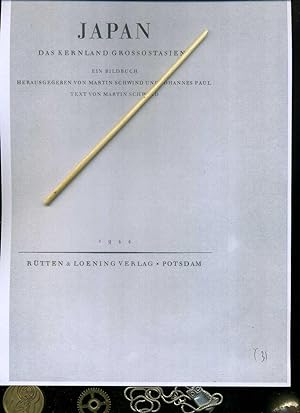
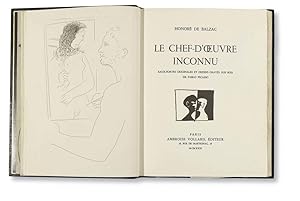

![Seller image for Manuscript on paper, written in one fine legible hand, entitled on label of the first volume: "Gakkaroku" æ å® é ["{Kyoto} Imperial Court Music & Dances Musicological Encyclopedia"] for sale by Jonathan A. Hill, Bookseller Inc.](https://pictures.abebooks.com/inventory/md/md30438982040.jpg)
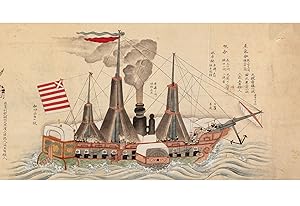
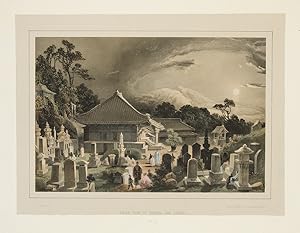
![Seller image for Journael ende historis verhael van de reyse gedaen by oosten de Straet Le Maire, naer de custen van Chili . inden jare 1643 voor gevallen. Including: [VRIES, Maerten Gerritsz.]. Als mede een beschryvinghe van het eylandt Eso, ghelegen ontrent dertigh mylen van het machtigh Rijcke van Japan . soo als eerst in 't selvige jaer door het schip Castricum bezeylt is.Amsterdam, Broer Jansz., 1646. 4to. With 2 folding engraved maps and a folding engraved plate. Modern wrappers, in cloth clamshell box. for sale by Antiquariaat FORUM BV](https://pictures.abebooks.com/inventory/md/md19022390767.jpg)
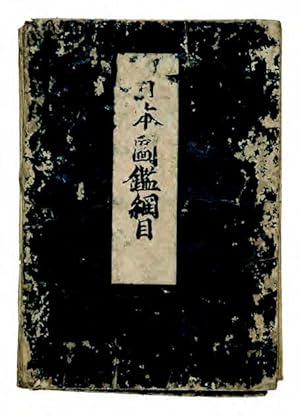

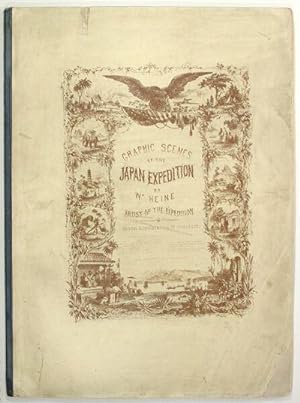
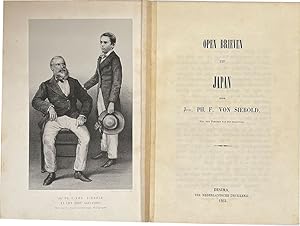
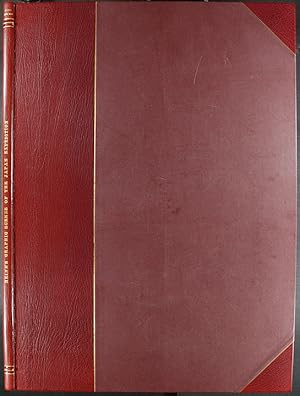
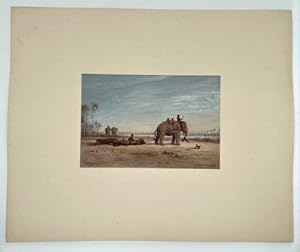
![Seller image for [Three Contemporary Japanese Manuscript accounts of the arrival of Commodore Perry in Japan, including a copy of the official government report of events] for sale by Donald A. Heald Rare Books (ABAA)](https://pictures.abebooks.com/inventory/md/md30856263061.jpg)
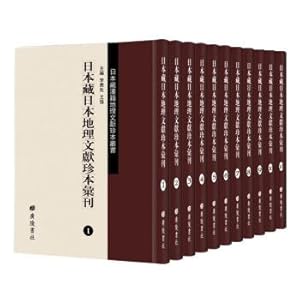
![Seller image for Nihon kokon meika zukai. Short Biographies of Emineni [sic] Japanese in Ancient and Modern Times, each with a Characteristic Illustration. Two volumes (all publ.). Tokyo, Kyushun-dõ, Meiji 20 & 23 (1887 & 1890).TOGETHER WITH: Pictorial Descriptions of Famous Places of Japan in Japanese and Chinese. Volume one (all publ.) Tokyo, Kyushun-dõ, (1888). for sale by Charlotte Du Rietz Rare Books (ILAB)](https://pictures.abebooks.com/inventory/md/md31063238919.jpg)
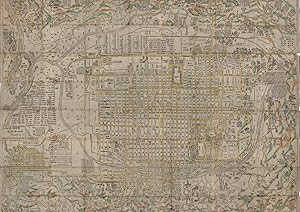

![Seller image for Daimin sanzÅ shÅ gyÅ mokuroku 大æ ä è è æ ç ®é [Catalogue of the Chinese Translation of the Buddhist Tripitaka, the Sacred Canon of the Buddhists in China & Japan] for sale by Jonathan A. Hill, Bookseller Inc.](https://pictures.abebooks.com/inventory/md/md30596071402.jpg)
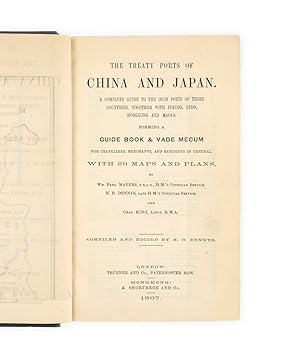
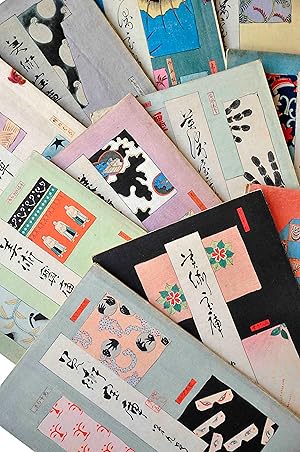
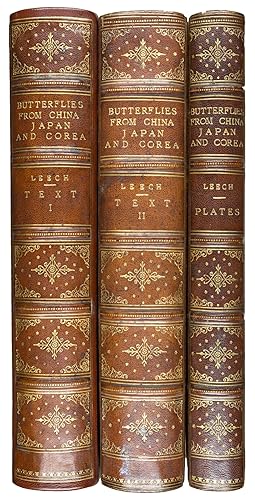
![Seller image for Manuscript albums of notes and the original drawings & paintings relating to his notable publication Rekisei fuzoku joso enkakuzu ko [trans.: Historical Customs & Costumes for the Women] of which a revised edition was published in Tokyo in 1911 for sale by Jonathan A. Hill, Bookseller Inc.](https://pictures.abebooks.com/inventory/md/md30013347130.jpg)
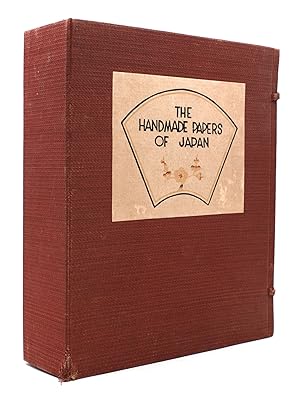


![Seller image for Leyendas y Narraciones Japonesas. [A Collection of Japanese Fairy Tales in Spanish]. Ten volumes. Tokyo, Hasegawa, Taisho 3 (1914). for sale by Charlotte Du Rietz Rare Books (ILAB)](https://pictures.abebooks.com/inventory/md/md31063238918.jpg)
